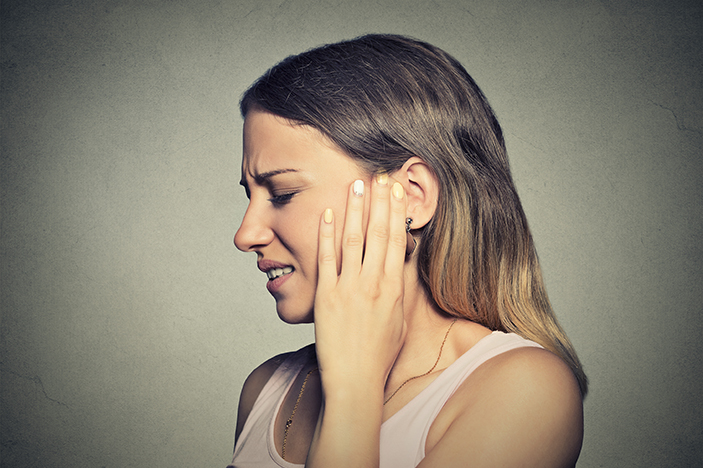
It’s not just kids who get ear infections — adults can have them, too. Here’s how to reduce your risk.
If you feel pain or fullness in your ear, notice fluid leaking out or are having trouble hearing, you might have an ear infection. Although more common in children, adults can get them, as well — especially in the winter, when colds and flu lead to secondary infections.
Ear infections occur when your middle ear gets clogged and air can’t get through, creating a moist breeding ground for bacteria.
“Simple acute ear infections can occur if the Eustachian tube, which connects the nose to the middle ear space, gets blocked and fluid builds up,” says John S. Oghalai, MD, an otolaryngologist at Keck Medicine of USC, and chair and professor of otolaryngology – head and neck surgery at the Keck School of Medicine of USC. “Children are more likely to get ear infections, because their Eustachian tubes are shorter and more horizontal, so they don’t drain as well.”
You can take measures to reduce your risk of infection, especially in the colder months when they are more common:
Practice cold prevention.
The more you’re sick with colds, the more likely one will turn into an ear infection. So, remember to wash your hands well, especially before touching your face or eating, and avoid sick people.
Try nasal irrigation.
Dr. Oghalai recommends rinsing out your nose, to keep your passages free and clear.
“The best preventive measure is probably daily nasal irrigation with saline, to remove irritants and allergens from the nasopharynx, the back of the nose where the Eustachian tube opening is,” he says.
Get a flu shot.
Along with cold prevention, you should take measures for avoiding the flu, as well. Reducing your risk of coming down with influenza means less risk of germs migrating to your ears, while you’re sick.
Take care of allergies.
Allergies can wreak havoc, when heading into winter, but keeping them under control can keep your ear tubes from getting swollen. Oghalai recommends anti-allergy nasal sprays, such as Flonase or Nasonex.
Keep your ears clean and dry.
Proper hygiene also can help keep your ears healthy. After showering, use your finger and a tissue. You can even use a blow-dryer, while you’re drying your hair. But, “never use a cotton swab,” according to Oghalai.
“It takes out about half the earwax and pushes the other half in very deep, where it is really hard to get it out,” he says. “Earwax naturally comes out in the shower, and most people have no need to worry about buildup.”
Don’t smoke.
Cigarette smoke is an irritant, and smoking can lead to your tubes becoming inflamed. And secondhand smoke can have a similar effect.
“Stay away from irritants, pollution and smoke,” Oghalai says.
When to see the doctor
Ear infections often clear up on their own, without antibiotics, but if you’re in a lot of pain or it’s been a few days, call your doctor. Chronic ear infections can be a problem for some people with a perforated eardrum or a long history of ear disease since childhood. Talk to your doctor about your options in this case.
“If fluid continues to build up in the middle ear space, we now consider Eustachian tube dilation,” Oghalai says. “A balloon is used to dilate the Eustachian tube, to improve aeration and fluid drainage. If this is done, an ear tube is not needed, lowering the risk for long-term side effects that can be associated with this treatment.”
Topics
